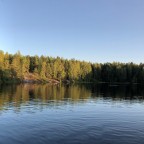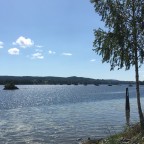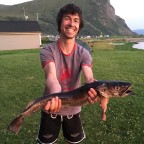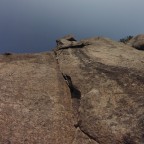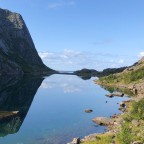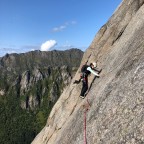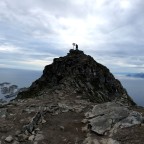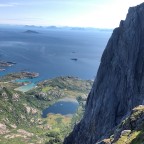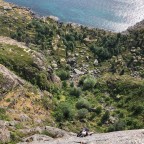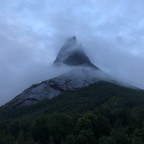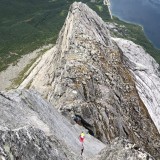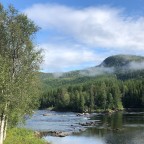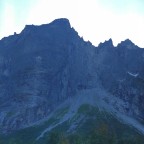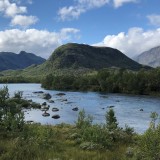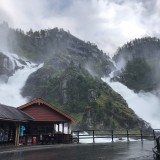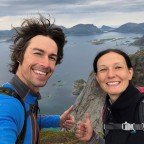Our journey
The summer in Norway is one of the most beautiful trips we have ever made. We were on the road for almost eight weeks. The trip to the north was definitely not the last one because there is still plenty to see and to explore. The landscape is beautiful and the locals are friendly. Even the weather was much better than we had expected.
Long distances
The roads in Norway, especially north of Oslo, Bergen and Lillehammer, are far less developed than we are used to. We were surprised about the huge distances we had to cover and especially how long it took us to get there. All in all, we traveled almost 9000 km resulting in a pure driving time of almost 135 hours.
Along the motorways there are large shopping centers and above all well-developed rest areas. These are often arranged very nicely with green areas, seating, free toilets, water supply and disposal facilities for RVs etc. Electric cars have been considered as well. We have never seen as many charging stations as in Norway. You can find them even in remote areas.
Campers are welcome in Norway. Norwegians like to camp themselves. Accordingly, the infrastructure and the possibilities for camping are very good. Not once we had problems. We did not ignore any signs where camping was explicitly forbidden and we behaved respectfully.
Supply
Simply going out for dinner to a restaurant is not common in Norway. This is more likely on formal occasions. Accordingly, it is very expensive to go to a restaurant or a bar. We advise self-supply and self-cooking.
The food is more expensive than in Austria, especially alcohol, meat, fish and sweets. When buying vegetables, fruits or bread, it pays to compare the prices of the supermarkets. These vary a lot and often you can find store brands or special offers. Another option is to bring as much as possible from home or from other countries. BUT please be aware of the import restrictions for alcohol and potatoes (no joke), otherwise there might be a nasty surprise at the customs.
Self-supplying
Raspberries, blueberries, wild strawberries, cranberries and mushrooms can be found almost everywhere depending on the season. Only cloudberry places are kept a secret by the locals as the berries are considered a rather rare delicacy. Nobody in Austria will disclose his or her mushroom places either.
Fishing
A fishing rod and some flashers will pay off in any case. Sea fishing is allowed everywhere, only some lakes and rivers are subject to restrictions and additional license fees. If needed, you can learn how to fillet different fish species by video tutorial.
Fishing allowed us to frequently eat fish without straining our budget. In supermarkets fish is quite expensive although there is plenty of it up here.
Expenses
The transport costs accounted for almost 75% of the overall costs. These include all expenses for fuel, tolls, ferries etc. Since we cooked for ourselves and in addition fished, collected and tried dumpster diving, the cost for food was just over 20%. Of course, climbers also need sweets and therefore we always had a good supply of gorp, biscuits and chocolate on board. We did not buy any meat or alcohol in Norway. For fun, art and culture, various entrance fees etc. we spent very little. Only one percent of the costs were spent on fees for parking and camping. Miscellaneous includes the purchase of souvenirs, gifts, etc.

Since the transport costs remain the same, you should take a lot of time for your trip and stay longer at one place. Thus, one has enough time to enjoy and the long drives become less bothering.
Important lessons learned
- The credit card is the most important means of payment. Even public toilets and showers at some beaches can only be used with a credit or debit card. We never had to withdraw or change money.
- Register a second device for online banking. If you lose your smartphone, you might not be able to do transactions or online payments with your credit card.
- It is essential to have a sleeping mask or the opportunity to completely darken the sleeping area since it might not get dark in summer at all.
- A good mosquito net and mosquito repellent are useful. We would not leave without one. We have fine mosquito nets on the windows and can therefore have fresh air and enjoy the view, even if there are whole swarms of nasty creatures outside of Elmo.
- Don’t forget to bring your bathing suit. Even in Norway it can be over 30 degrees Celsius.
- Backup your photos on a daily basis. We lost a lot of great photos because I was not able to make a backup for a few days.
- Using ferries along the coast cannot only save time but also money because some roads, bridges and tunnels are subject to charges as well.
- Use ferries wherever possible. Both from Germany or Denmark to Norway or Sweden as well as within Norway.
Useful apps
- Weather: pent.no, meteoblue, Tides
- Camping: park4night





